By Erin Turbeville, Assistant Registrar
Historic Deerfield’s collection houses over 200 objects of Dutch origin, with more than 100 of these ceramics. Dutch ceramics have long been valued by collectors, and delftware is a recognizable name, bringing to mind images of blue and white tiles, plates, and bowls. A period of “Holland mania” in the late 19th and early 20th centuries contributed to the rise in popularity of Dutch art and decorative arts in the United States. But while craftsmanship, nostalgia, and aesthetic value may have been factors in the collection of these pieces, looking at the objects through a different lens tells another story of how deeply imperial influences and material culture can be intertwined.
The origins of blue and white delftware are linked to the Dutch trading empire, led by its financially and militarily powerful East India Trading Company (Vereenigde Oostindische Compagnie, or VOC). In the 17th century, delftware began to be modeled after popular Chinese ceramics, which were brought to the Dutch Republic in large numbers once the VOC had established a strong presence in East and Southeast Asia.[2] Thus, many forms and designs of Dutch ceramics were derived from global empire building.
Imagery on delftware sometimes reflected empire and trade, as well. Two fireplace tiles at Historic Deerfield depict scenes with ships in the background, a reminder of the ever-present shipping network of the Dutch East and West India Companies (Figs. 1 and 2). The imagery may seem benign, but these ships facilitated an empire based in some places on trading posts and the exploitation of native populations, and in other places on settler colonialism and the trade of enslaved people.
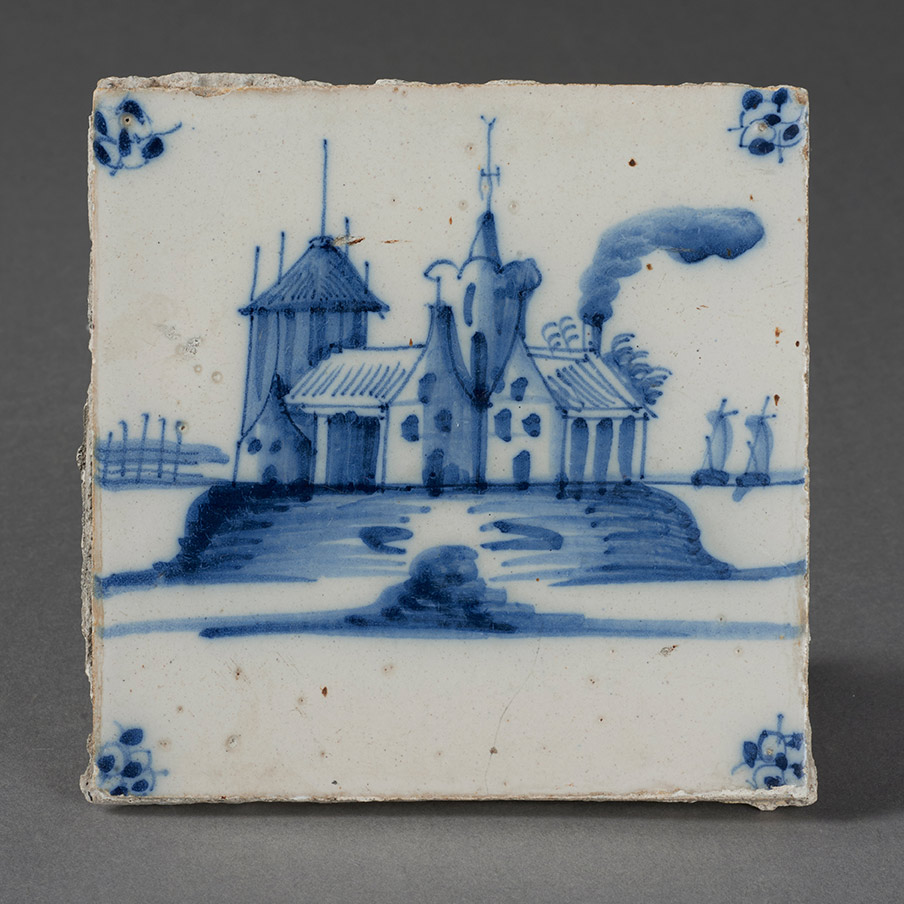
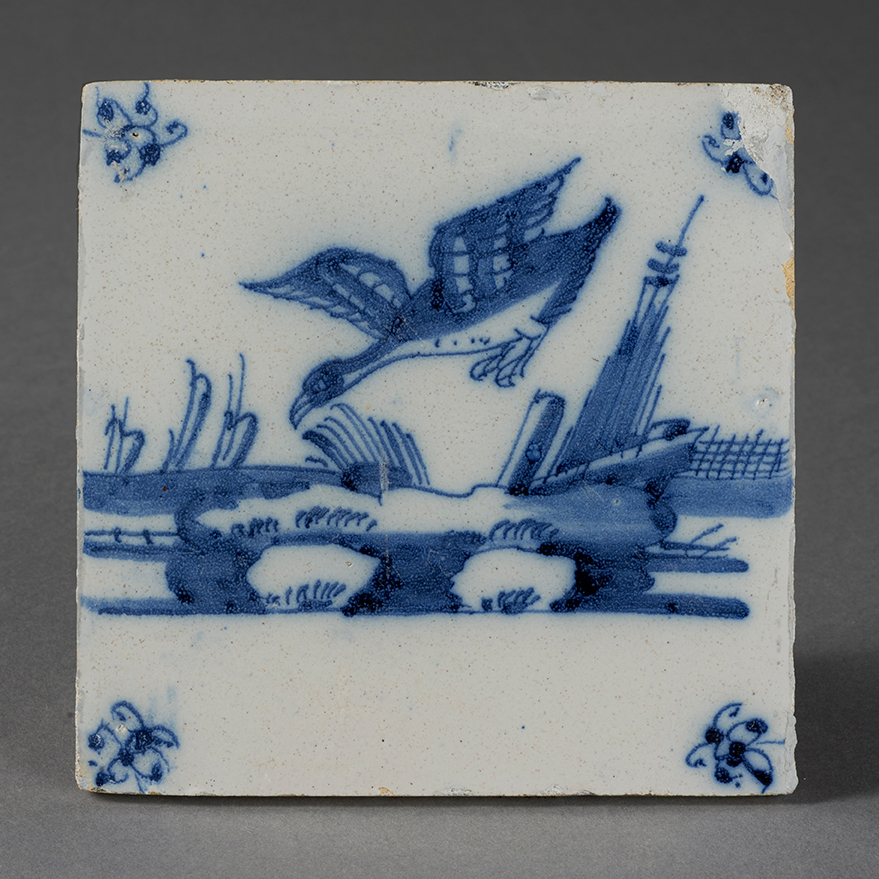
A pair of delftware plates dated to 1700-1720 exemplifies another trend of some early modern extractive regimes: the commodification of the natural resources of colonies. The plates depict bright, colorful parrots—birds not native to the Dutch Republic (Figs. 3 and 4). Thus, their presence on these Dutch-made plates indicates a knowledge of and interest in natural phenomena in other parts of the world. By the early 18th century, Dutch imperial power was strong in multiple tropical regions where parrots were native, such as the present-day nations of Indonesia and Suriname, allowing many merchants, sailors, and soldiers to see these animals in person. Like cabinets of curiosity and botanical gardens, images of nature in Dutch colonies on commodifiable goods gave people in the imperial center a way to control, display, and consume images of that empire.[3]
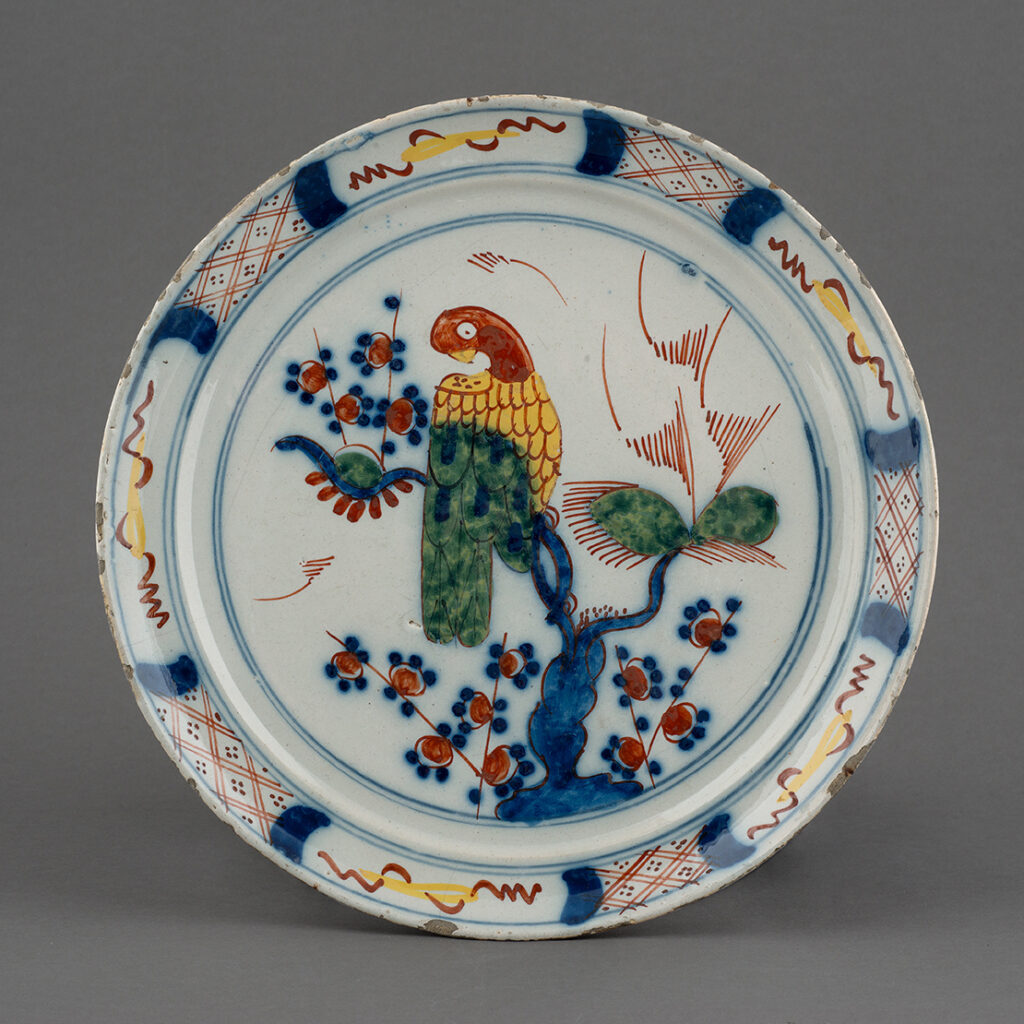
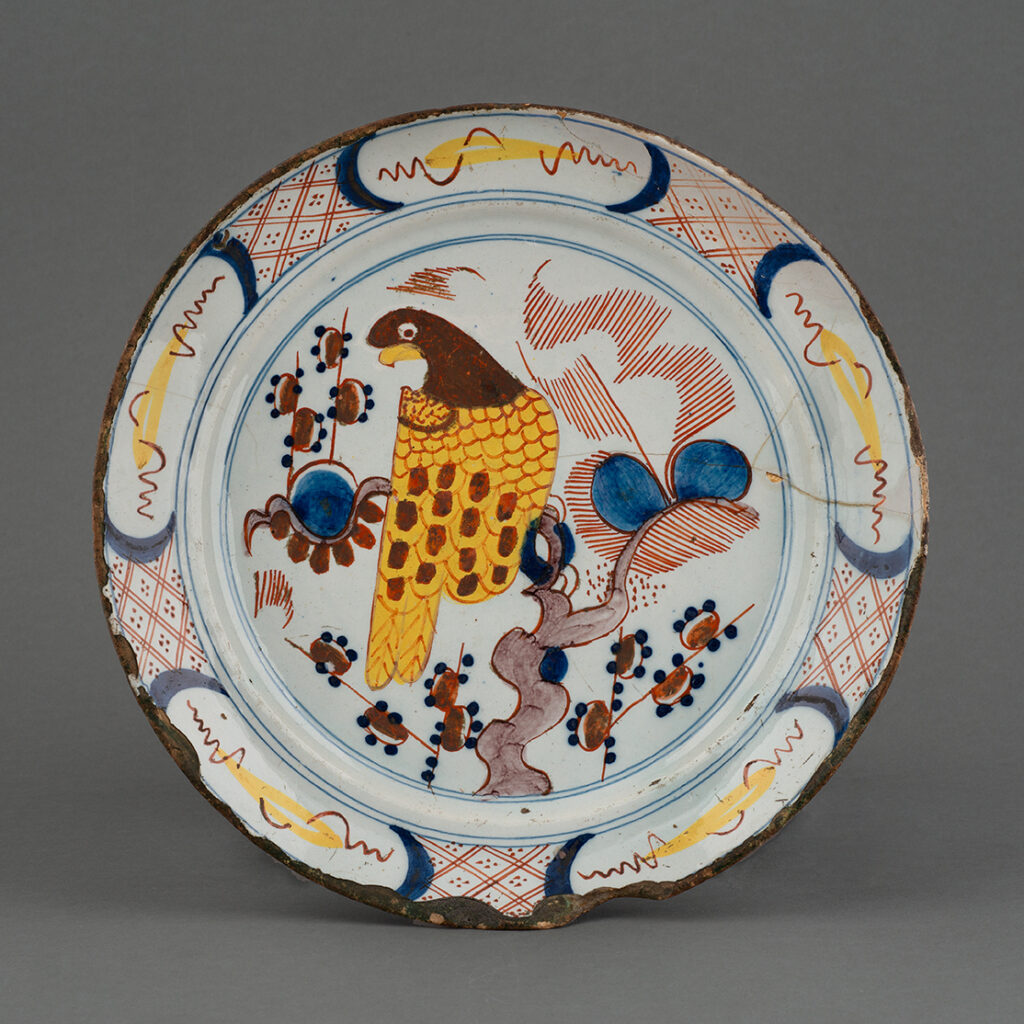
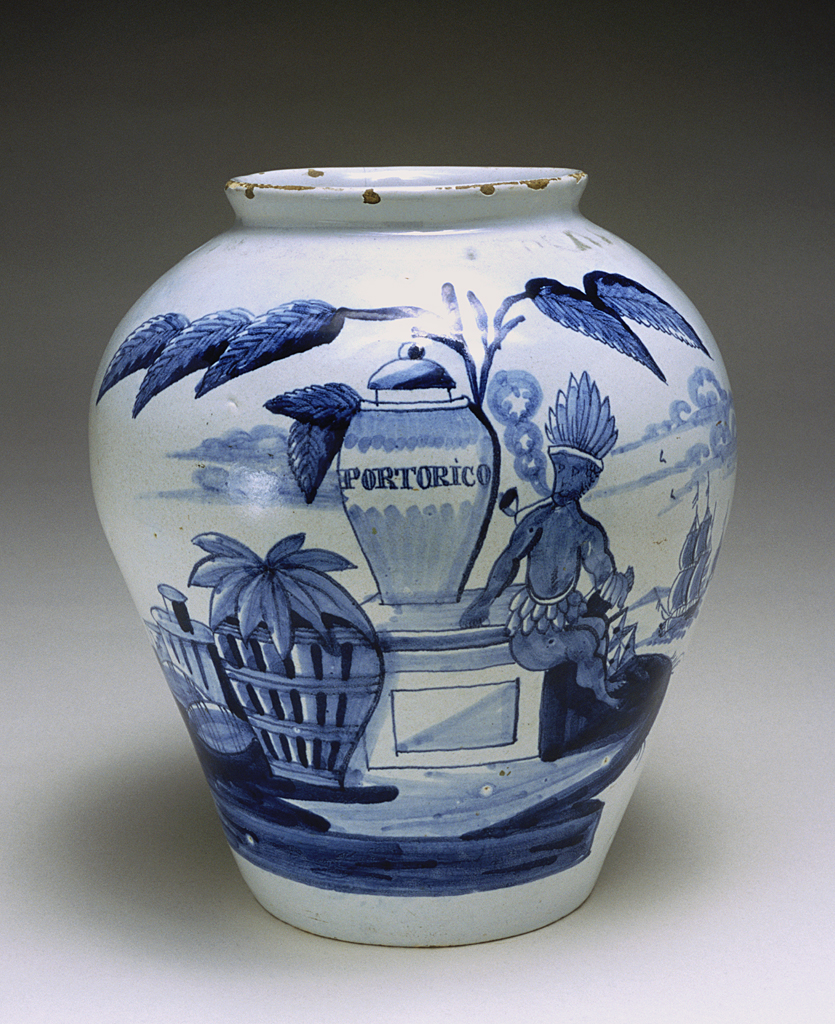
The most overtly imperial symbolism on a Dutch ceramic at Historic Deerfield appears on a set of objects whose function is also thoroughly tied to empire: a set of four tobacco jars from the early to mid-18th century (Fig. 5).[4] The jars are decorated with near identical scenes that depict a Dutch imperial view of Caribbean and South American colonies and their tobacco production. The scene itself has at its center a similarly shaped tobacco jar; a different word is written on each jar, all of which refer to either a resource or commodity the Dutch extracted from the Americas or a place in the region. A box labeled “VOC” sits to the left of the jar, and in the background is a ship, presumably belonging to one of the trading companies. These symbols all connect directly to parts of the Dutch imperial system.
Also integral to the imperial mindset was a racialized and stereotyped view of Indigenous Americans, depicted on these jars in the form of an individual wearing a feathered headdress and a leaf skirt, and sitting comfortably next to the packaged commodities while smoking a pipe.
A similar depiction of Indigenous Americans is found on a 17th century relief on the front pediment of the Royal Palace in Amsterdam, an imposing building that has served as city hall and palace and is now a major tourist attraction. On the right side of the relief, three figures represent the Americas serving Amsterdam, alongside figures representing other continents (Fig. 6).
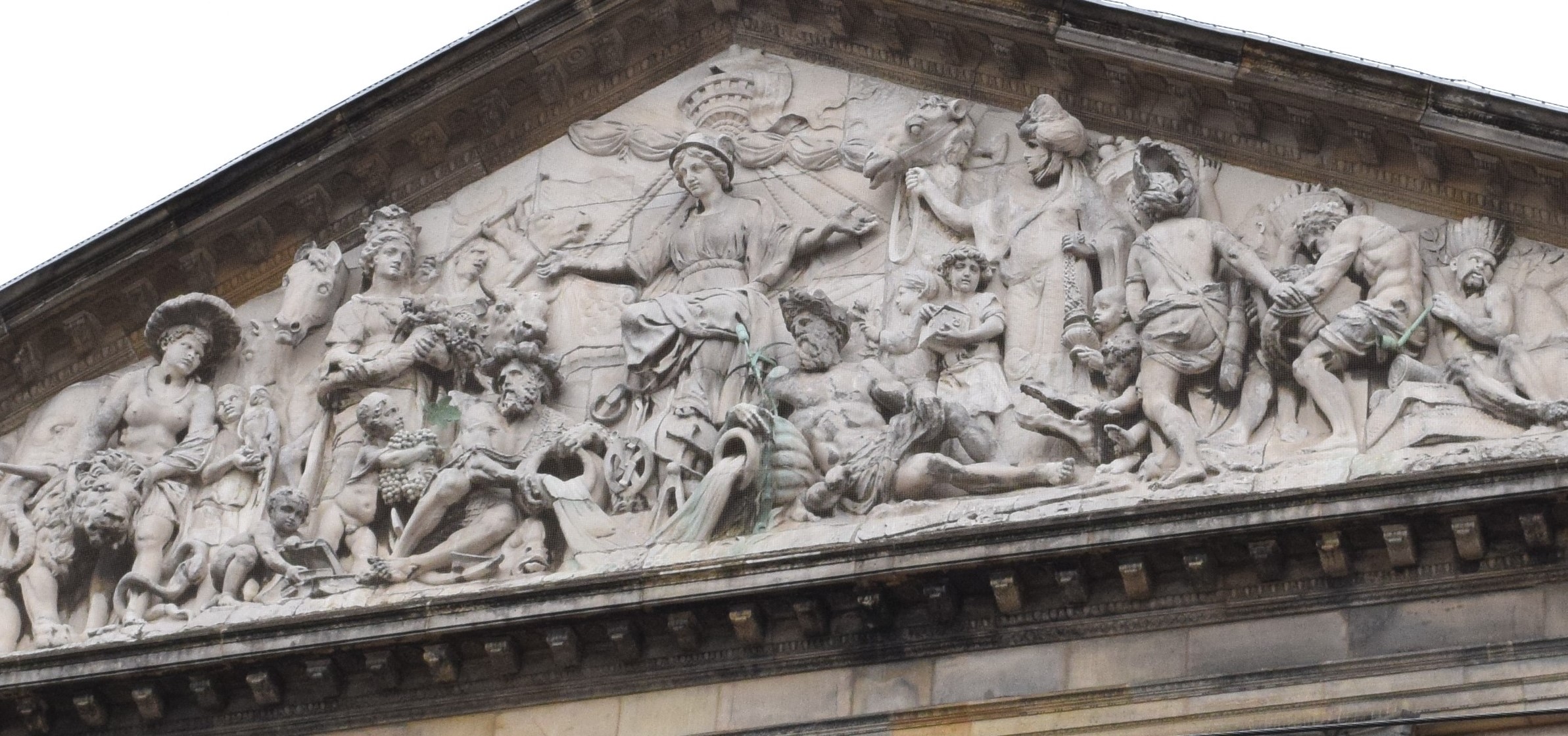
As recognizable iconography in 17th- and 18th-century Amsterdam, these depictions of accommodating and even obsequious Indigenous Americans would have overshadowed the complexities of different Indigenous societies and their relationships with European colonizers, hiding the exploitation and violence they faced and the resistance with which they responded. Thus, consumers of the tobacco stored in this tobacco jar could have easily enjoyed this product while ignoring the full conditions under which it was produced. The ubiquity of this stereotype across multiple European empires was such that the imagery can still be found in modern media, perpetuating harm to Indigenous communities today.
To understand delftware as a category of decorative art, we must recognize not only the beauty and craftsmanship behind it, but also its deep connection to empire in its origins, symbolism, and purposes.
For more on empires and material culture at Historic Deerfield, stay tuned for information on our upcoming symposium “Reawakening Materials: American Art, Empire, and Material Histories in Historic Deerfield’s Collection” from November 7-8, 2024.
[1] Annette Stott, Holland Mania: The Unknown Dutch Period in American Art and Culture (Woodstock, NY: The Overlook Press, Peter Mayer Publishers, Inc., 1998), 9-17, 184-185.
[2] Amanda E. Lange, Delftware at Historic Deerfield, 1600-1800 (Deerfield, MA: Historic Deerfield, Inc., 2001), 11-12.
[3] Zara Anishanslin, Portrait of a Woman in Silk: Hidden Histories of the British Atlantic World (New Haven: Yale University Press, 2016), 81-103; Harold J. Cook, Matters of Exchange: Commerce, Medicine, and Science in the Dutch Golden Age (New Haven: Yale University Press, 2007); Dániel Margócsy, Commercial Visions: Science, Trade, and Visual Culture in the Dutch Golden Age (Chicago: University of Chicago Press, 2014).
[4] See also: HD 1687A, HD 1687B, and HD 2257.